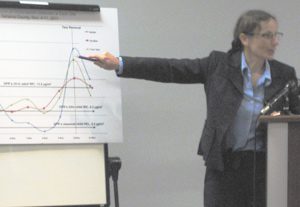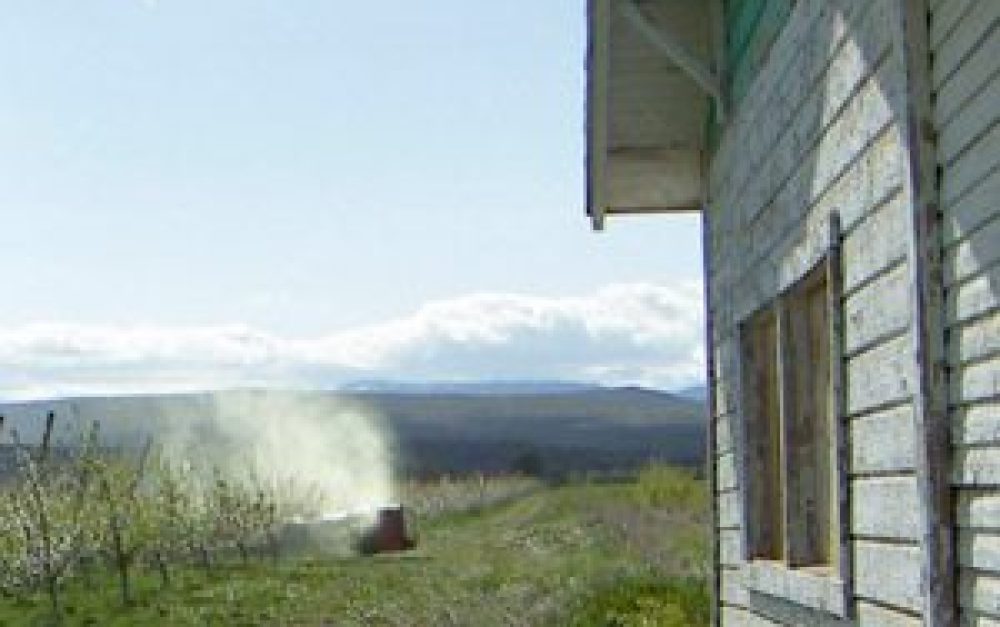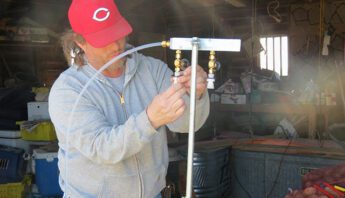A group of rural Californians made the trek to Sacramento Tuesday morning to tell lawmakers just how concerned they are about their families being exposed to cancer-causing soil fumigant pesticides.
Many people in Tehama county live just feet from where fumigant pesticides are routinely applied. At the state capitol, community members presented officials with data showing high levels of a carginogenic fumigant pesticide detected in yards neighboring one of these fields.
We’re on the front lines of pesticide exposure. These levels of pesticide exposure for our children are unacceptably high, and deserve swift and immediate action from local and state officials to ensure protection.
This according to Sam Sleezer, a community member who placed a Drift Catcher in his childrens’ sandbox. Sleezer works with Healthy Tehama Farms, the community group organized by rural families in 2010 to protect their community from exposure to fumigant pesticides.
Although pesticide manufacturer Arysta LifeScience pulled the fumigant pesticide methyl iodide from the U.S. market on March 20, other soil fumigant pesticides remain in use until safer alternatives are firmly put in place.
Rural families take action
 Back in 2010, Tehama county residents were becoming increasingly alarmed by the smell of chemicals in the air, and worried about the potential health impacts for their children and grandchildren.
Back in 2010, Tehama county residents were becoming increasingly alarmed by the smell of chemicals in the air, and worried about the potential health impacts for their children and grandchildren.
After forming Healthy Tehama Farms, the group contacted PAN for assistance. PAN scientists provided air monitoring tools — known as Drift Catchers — and conducted robust training in air sampling techniques.
Manuel Silveira, the group's coordinator, describes the project:
We decided to take action when state officials failed to provide protection for rural communities and our children. Equipped with scientific tools, including the Drift Catcher, we’ve shown that drift from application of fumigant pesticides is a real and present danger.
Community members monitored the air in their garden, Sleezer's backyard sandbox and Silveira's front yard.
Scientific evidence of exposure
High levels of the soil fumigant pesticide chloropicrin — a potent carcinogen that can also cause permanent damage to the lungs — were detected in all air samples
Eight-day average chloropicrin levels were 4-5 times higher than the level determined by state scientists to be "safe" short-term exposure levels for children to protect against respiratory damage (2.4 μg/m3). In addition, cancer risks from exposures to chloropicrin were high, with a lifetime cancer risk 151 times higher than the generally acceptable risk.
For a two-year old exposed each year for only two years, the cancer risk was found to be 76 times higher.
Time for solutions
Earlier this month, the new Director of California's Department of Pesticide Regulation, Brian Leahy, signaled a policy shift to support investment in safer alternatives to soil fumiant pesticides. Leahy announced a new partnership with the California Strawberry Commission to support farmers to implement innovative practicies that transition off these hazardous pesticides.
Meanwhile, industry plans another pesticide fumigation in Tehama later this month. Concerned Californians urged decisionmakers in Sacramento to support a rapid transition from soil fumigant pesticides to safer alternatives.
The health of rural families is in the balance, and those in Tehama want to see an end to such dangerous chemical exposure at home, in school and at work.







